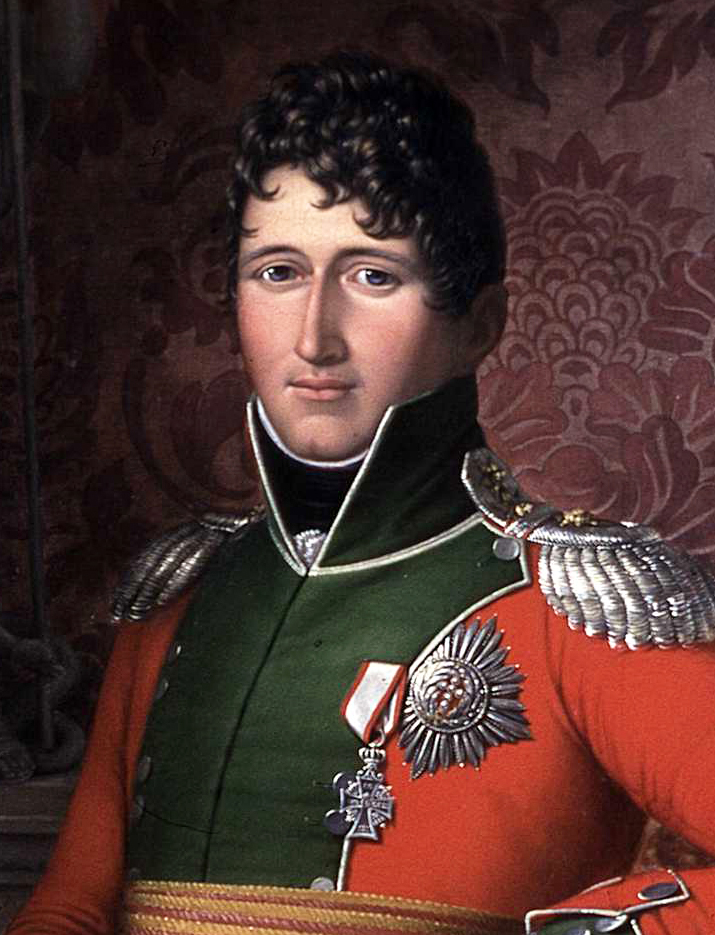|
Riksakten
The ''Riksakten'' was the 1815 Act of Union that regulated the terms of the constitutional personal union between Sweden and Norway established in 1814. History The fundamental documents of the union were only the Convention of Moss and the revised Norwegian constitution of 4 November 1814. The Norwegian constitution had been adapted to the union before it was entered into, but the Swedish one was never adjusted correspondingly. The conservative Swedish Riksdag had not allowed the Swedish constitution of 1809 to be revised. Therefore, a bilateral treaty had to be negotiated in order to clarify procedures for treating constitutional questions that had to be decided jointly by both governments. The Act of Union (''Riksakten'') was negotiated during the spring of 1815, with prime minister Peder Anker leading the Norwegian delegation. The treaty contained twelve articles dealing with the king's authority, the relationship between the two legislatures, how the executive power was t ... [...More Info...] [...Related Items...] OR: [Wikipedia] [Google] [Baidu] |
Union Between Sweden And Norway
Sweden and Norway or Sweden–Norway ( sv, Svensk-norska unionen; no, Den svensk-norske union(en)), officially the United Kingdoms of Sweden and Norway, and known as the United Kingdoms, was a personal union of the separate kingdoms of Sweden and Norway under a common monarch and common foreign policy that lasted from 1814 until its peaceful dissolution in 1905. The two states kept separate constitutions, laws, legislatures, administrations, state churches, armed forces, and currencies; the kings mostly resided in Stockholm, where foreign diplomatic representations were located. The Norwegian government was presided over by viceroys: Swedes until 1829, Norwegians until 1856. That office was later vacant and then abolished in 1873. Foreign policy was conducted through the Swedish foreign ministry until the dissolution of the union in 1905. Norway had been in a closer union with Denmark, but Denmark-Norway's alliance with Napoleonic France caused the United Kingdom and ... [...More Info...] [...Related Items...] OR: [Wikipedia] [Google] [Baidu] |
Norway In 1814
In 1814, the Kingdom of Norway made a brief and ultimately unsuccessful attempt to regain its independence. While Norway had always legally been a separate kingdom, since the 16th century it had shared a monarch with Denmark; Norway was a subordinate partner in the combined state, whose government was based in Copenhagen. Due to its alliance with France during the Napoleonic Wars, Denmark was forced to sign the Treaty of Kiel in January 1814 ceding Norway to Sweden. However, many Norwegians were inspired by the rising tide of nationalism and resented being handed over without their consent to Sweden, a state they viewed as a traditional rival. Under the leadership of Christian Frederick, who was the Danish government's representative in Norway and also the king of Denmark's cousin and heir presumptive, Norway attempted to assert its rights as an independent state. A government was established and a constitution written, under which Christian Frederick was elected king of Norwa ... [...More Info...] [...Related Items...] OR: [Wikipedia] [Google] [Baidu] |
Sweden In Union With Norway
The Union between Sweden and Norway is an overriding theme of the history of Sweden in the 19th century. On 4 November 1814, the kingdoms of Sweden and Norway formed a personal union under one king. The two countries had completely separate institutions, except for the foreign service led by the king through the Swedish foreign minister. The Union was seen by Sweden as the realization of an idea that had been nursed for centuries, albeit one that had been strengthened by the recent loss of Finland. When it was finally accomplished, it was due to political circumstances beyond the borders of Scandinavia. The Napoleonic wars caused Finland to be separated from Sweden, and provided the chance to compensate for the loss by wresting Norway from the united kingdoms of Denmark-Norway. Sweden actively exploited the opportunity, while Norway reluctantly resigned itself to submitting to another inevitable union. That initial disparity in attitudes towards the Union caused recurring polit ... [...More Info...] [...Related Items...] OR: [Wikipedia] [Google] [Baidu] |
King In Council (Sweden)
King in Council, or Royal Majesty, (most formally ''Konungen i Statsrådet'', but a term for it most often used in legal documents was Kunglig Majestät or short form Kungl.Maj:t or K.M:t. in Swedish) was a term of constitutional importance that was used in Sweden before 1975 when the 1974 Instrument of Government came into force. ''Royal Majesty'' denoted several functions, but most importantly, it was the commonly used term that designated the supreme executive authority under the 1809 Instrument of Government: where the King made all decisions of state in the presence of his cabinet ministers. The 1974 Instrument of Government removed the Monarch from all exercise of formal political powers and created its successor: the Government ( sv, Regeringen) chaired and led in all aspects by the Prime Minister. History of the term ''Kunglig Majestät'' The term ''Kunglig Majestät'' was earliest in use in Sweden in the 16th century, when the King of Sweden and other kings in Europe ... [...More Info...] [...Related Items...] OR: [Wikipedia] [Google] [Baidu] |
United Kingdoms Of Sweden And Norway
United may refer to: Places * United, Pennsylvania, an unincorporated community * United, West Virginia, an unincorporated community Arts and entertainment Films * ''United'' (2003 film), a Norwegian film * ''United'' (2011 film), a BBC Two film Literature * ''United!'' (novel), a 1973 children's novel by Michael Hardcastle Music * United (band), Japanese thrash metal band formed in 1981 Albums * ''United'' (Commodores album), 1986 * ''United'' (Dream Evil album), 2006 * ''United'' (Marvin Gaye and Tammi Terrell album), 1967 * ''United'' (Marian Gold album), 1996 * ''United'' (Phoenix album), 2000 * ''United'' (Woody Shaw album), 1981 Songs * "United" (Judas Priest song), 1980 * "United" (Prince Ital Joe and Marky Mark song), 1994 * "United" (Robbie Williams song), 2000 * "United", a song by Danish duo Nik & Jay featuring Lisa Rowe Television * ''United'' (TV series), a 1990 BBC Two documentary series * ''United!'', a soap opera that aired on BBC One from 1965-19 ... [...More Info...] [...Related Items...] OR: [Wikipedia] [Google] [Baidu] |
Dissolution Of The Union Between Norway And Sweden
The dissolution of the union ( nb, unionsoppløsningen; nn, unionsoppløysinga; Landsmål: ''unionsuppløysingi''; sv, unionsupplösningen) between the kingdoms of Norway and Sweden under the House of Bernadotte, was set in motion by a resolution of the Storting on 7 June 1905. Following some months of tension and fear of an outbreak of war between the neighbouring kingdoms (then in personal union) – and a Norwegian plebiscite held on 13 August which overwhelmingly backed dissolution – negotiations between the two governments led to Sweden's recognition of Norway as an independent constitutional monarchy on 26 October 1905. On that date, King Oscar II renounced his claim to the Norwegian throne, effectively dissolving the United Kingdoms of Sweden and Norway, and this event was swiftly followed, on 18 November, by the accession to the Norwegian throne of Prince Carl of Denmark, taking the name of Haakon VII. Background Norwegian nationalistic aspirations in 1814 were f ... [...More Info...] [...Related Items...] OR: [Wikipedia] [Google] [Baidu] |
Union Dissolution Day
The Union Dissolution Day, observed in Norway on 7 June (though not a public holiday), is marked in remembrance of the Norwegian parliament's 1905 declaration of dissolution of the union with Sweden, a personal union which had existed since 1814. The day is celebrated in Norway as the Independence Day and is an official flag flying day, and is observed with ordinary salute at Akershus Fortress. The Independence Day, however, has few traditions of celebration beyond that. Royal return after World War II By historical coincidence, 7 June was also the date in 1940 when King Haakon VII of Norway and the royal family, along with the Norwegian cabinet and parliament, had to leave the country after escaping the German forces during the World War II invasion of Norway; and it is also the date in 1945 on which the King returned after 5 years of exile in London. Gallery References External links Norway 1905–2005– Newspaper ''Aftenposten'' 's Union Dissolutio ... [...More Info...] [...Related Items...] OR: [Wikipedia] [Google] [Baidu] |
Scandinavism
Scandinavism ( da, skandinavisme; no, skandinavisme; sv, skandinavism), also called Scandinavianism or pan-Scandinavianism,"Pan-Scandinavianism" . (2007). In ''Encyclopædia Britannica''. Retrieved April 29, 2007, from Encyclopædia Britannica Online. is an ideology that supports various degrees of cooperation among the Scandinavian countries. Scandinavism comprises the literary, linguistic and cultural movement that focuses on promoting a shared Scandinavian past, a shared cultural heritage, a common Scandinavian mythology and a North Germanic languages, common language or dialect continuum (from the common ancestor language of Old Norse), and which led to the formation of joint periodicals and societies in support of Scandinavian literature and languages. Nordism expands the scope to incl ... [...More Info...] [...Related Items...] OR: [Wikipedia] [Google] [Baidu] |
Constitutional Law
Constitutional law is a body of law which defines the role, powers, and structure of different entities within a State (polity), state, namely, the executive (government), executive, the parliament or legislature, and the judiciary; as well as the basic rights of citizens and, in federal countries History of the United States Constitution, such as the United States and Provinces of Canada, Canada, the relationship between the central government and state, provincial, or territorial governments. Not all nation states have codified constitutions, though all such states have a ''jus commune'', or law of the land, that may consist of a variety of imperative and consensual rules. These may include custom (law), customary law, Convention (norm), conventions, statutory law, precedent, judge-made law, or international law, international rules and norms. Constitutional law deals with the fundamental principles by which the government exercises its authority. In some instances, these princi ... [...More Info...] [...Related Items...] OR: [Wikipedia] [Google] [Baidu] |
Charles XIII Of Sweden
Charles XIII, or Carl XIII ( sv, Karl XIII, 7 October 1748 – 5 February 1818), was King of Sweden from 1809 and King of Norway from 1814 to his death. He was the second son (and younger brother to King Gustav III) of King Adolf Frederick of Sweden and Louisa Ulrika of Prussia, sister of Frederick the Great. Though known as King Charles XIII in Sweden, he was actually the seventh Swedish king by that name, as Charles IX (reigned 1604–1611) had adopted his numeral after studying a fictitious history of Sweden. In Norway he is known as Charles II. Early life Prince Charles was placed under the tutelage of Hedvig Elisabet Strömfelt and then Ulrica Schönström. He was appointed grand admiral when he was but few days old. He was described as a good dancer at the amateur theatre of the royal court. Reportedly he was not very close to his mother. The Queen preferred her youngest children, Sophie Albertine and Frederick Adolf.Alma Söderhjelm (1945). ''Gustav III:s syskon'' ... [...More Info...] [...Related Items...] OR: [Wikipedia] [Google] [Baidu] |
Pragmatic Sanction
A pragmatic sanction is a sovereign's solemn decree on a matter of primary importance and has the force of fundamental law. In the late history of the Holy Roman Empire, it referred more specifically to an edict issued by the Emperor. When used as a proper noun, and the year is not mentioned, it usually refers to the Pragmatic Sanction of 1713, a legal mechanism designed to ensure that the Austrian throne and Habsburg lands would be inherited by Emperor Charles VI's daughter, Maria Theresa.{{Citation needed, date=November 2021 Pragmatic sanctions tend to be issued at times in which the theoretically ideal situation is untenable, and a change of the rules is called for. Examples *The Pragmatic Sanction of Justinian I, promulgated in August 554, on the reorganization of Italy following the Gothic War. *The so-called Pragmatic Sanction of Louis IX, purporting to have been issued in March 1269, regarding various clerical reforms, was a forgery fabricated in the 15th century. *Th ... [...More Info...] [...Related Items...] OR: [Wikipedia] [Google] [Baidu] |







